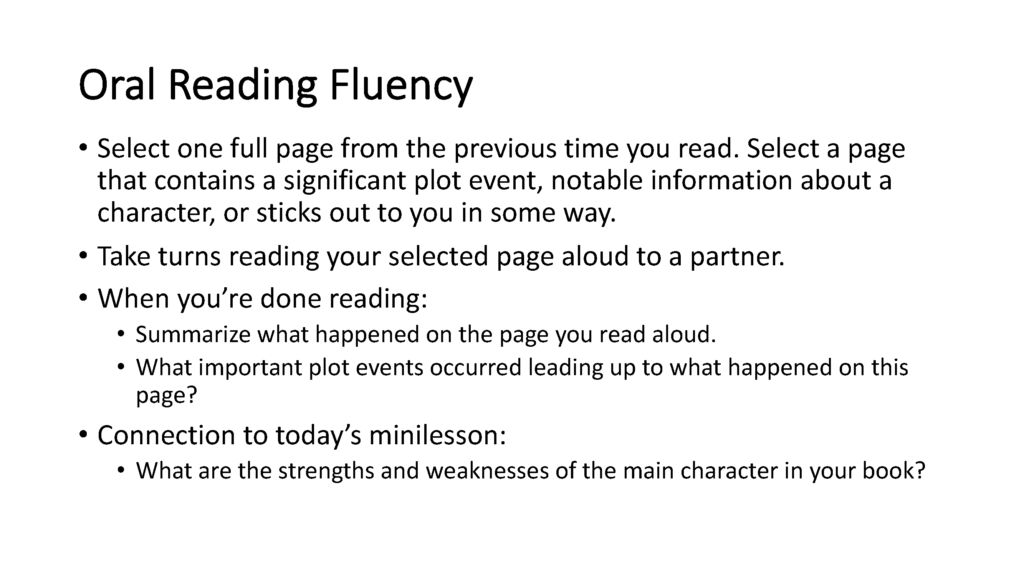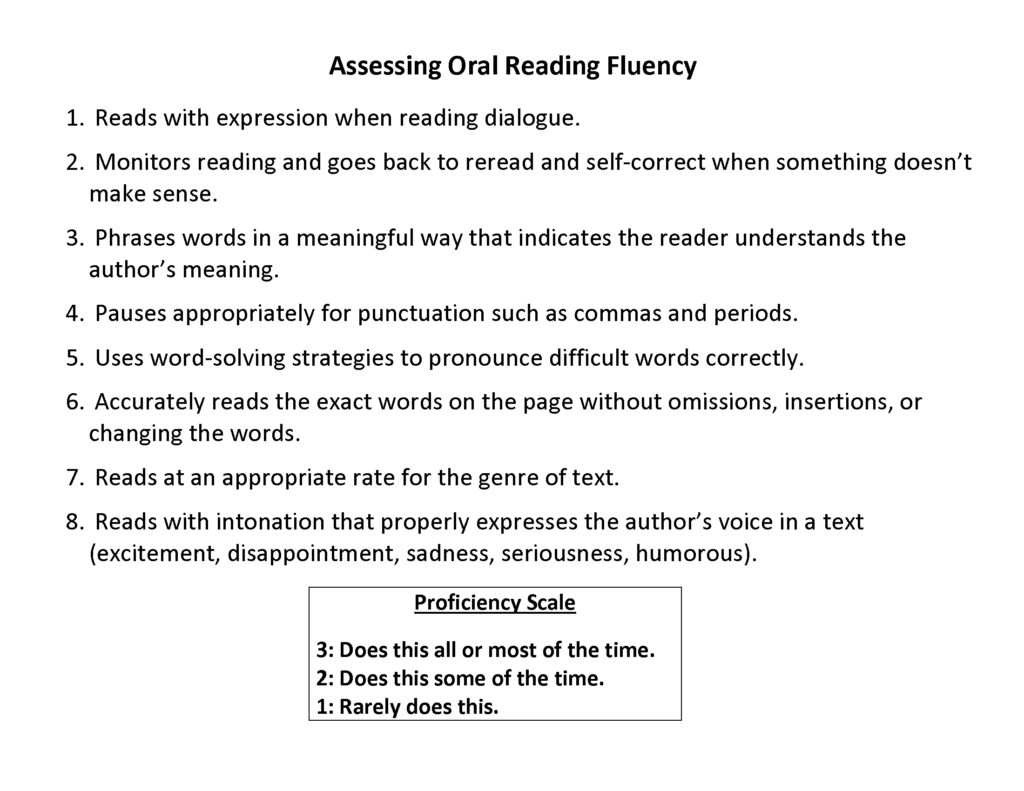In education, we often hear about what NOT to do. For many years now (my entire teaching career in fact), a big “no no” has been Round Robin Reading (and for good reason). So what should we do instead? How should we get students to practice reading fluency by reading aloud? Instead of just telling you what to avoid, I’m going to share a 3-5 minute addition that you can add to your literacy block every day, once a week, or 2-3 times a week. My students and I refer to it as Oral Reading Fluency.
What does an Oral Reading Fluency routine look like?
- I start by asking students to take out the book they are reading. If you are doing a reading unit, students would take out the book they are reading for that reading unit. This can easily be done with any book though, so an independent reading book is great, too.
- Next, I ask students to select one FULL page from the last five pages they’ve read. I encourage students to select a page that contains a significant plot event, contains notable information about a character, or sticks out to them in some way.
- Once students have selected one page, they partner up and take turns reading their selected page aloud to a partner. After the first students reads a page aloud, they summarize what happened on the page and briefly describe any pertinent plot events that led up to this part of the book.
- After each student has had a chance to read their selected page and summarize it, students discuss a “Minilesson Connection Question” that I display on our board. The question is directly connected to our reading minilesson for the day.

What are the benefits of consistently doing Oral Reading Fluency as part of my literacy block?
- Students practice reading aloud without the pressure that comes from reading aloud to the entire class. Reading aloud to one student is a low pressure opportunity to practice a skill that is known for causing students to get nervous.
- Students’ voices are being heard. It is my goal that every student has their voice heard by me or another student several times every class period. While this can be done through participation in class and turn and talks, Oral Reading Fluency is another way to ensure students’ voices are being heard.
- It will help increase students’ fluency. If students are practicing this consistently, practice pays off. 3-5 minutes of time weekly, several times a week, or daily (depending on the timing and flexibility of your literacy block) is worth giving students consistent fluency practice.
- Oral Reading Fluency incorporates a comprehension strategy. Students have to select a page from the previous five pages they’ve read that is notable in some way. This requires them to scan what they’ve most recently read and quickly review what happened and decide what page to pick. After rereading a page they’ve already read aloud, students summarize what happened on that page and tell the plot events that led up to that page. This is an AWESOME way for students to practice comprehension of books they’re reading independently. I would also like to note that this can be done with fiction and nonfiction, so this can work great for Social Studies and Science teachers who are incorporating nonfiction reading strategies as well. (For more resources on teaching nonfiction, check out my Middle School Nonfiction Reading Unit).
- Oral Reading Fluency helps students anticipate their learning as readers for the day. The “Minilesson Connection Question” gets students thinking about a main idea in the reading minilesson in relation to their book before the teacher even teaches the reading minilesson. Now that’s pretty awesome! In the example from the slide above, the reading minilesson for the day from my Realistic Fiction Reading Unit is, “Readers evaluate why the narrator is the best person to tell the story, or the best person to use as the main character.” The minilesson connection question is, “What are the strengths and weaknesses of the main character in your book.”
How should I be prompting students/encouraging feedback?
Sometimes we shy away from something because we don’t feel like we’re an expert in teaching it or don’t know what to say. I felt this way about having students read aloud. I am so comfortable when it comes to talking to students about literature and analyzing the plot, but when it comes to giving students feedback on how they’re reading aloud, that was outside of this middle school ELA teacher’s comfort zone. That’s why I wanted to share the rubric I developed and use for this after reading up on the different dimensions of fluency.
I like using the rubric by selecting one dimension of fluency and asking students to give their partners feedback in that one area. It also works great to have students identify 1-2 areas of fluency they are working on during Oral Reading Fluency.

Those are the basics of how I use Oral Reading Fluency, why I value incorporating it into our literacy block, and how I give students feedback about it. What do you think? Is it time to make it a part of the literacy block in your classroom?
-Kasey





